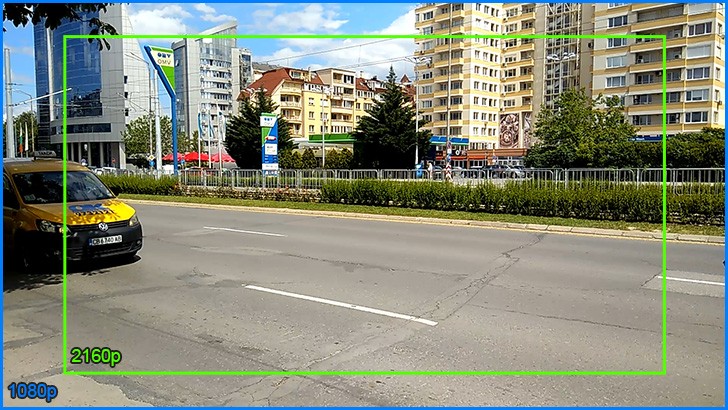Xiaomi Mi Max review: Hulked up
Hulked up

Camera
The Xiaomi Mi Max comes with a 16MP camera that features phase detection autofocus, f/2.0 lens and sports a dual-LED, dual-tone flash. On the front is a 5MP selfie cam with an 85° f/2.0 lens.

The camera interface is a custom MIUI job that splits the task in two - photos and videos - and relies on swipes to simplify some actions. A side swipe can switch between front and back camera, for example.
In photo mode, you can swipe down to access photo filters and up for additional shooting modes.


Swipe down for photo effects • Swipe up for additional shooting modes
We particularly like Straighten. It makes sure the photo you take is always level, you see a preview of how the image will be cropped. Fisheye and Tilt-shift are named after the lenses they imitate.
Hand-held Twilight mode takes 6 shots at high ISO. The idea is to keep the shutter speed at least 1/30s to avoid motion blur and to reduce the noise (resulting from the high ISO) by combining multiple shots.
A manual mode is available too, allowing you to change focus, shutter speed, ISO and white balance.
A word on shot to shot time - the camera is fast most of the time, but we had moments where the software felt stuck for a second (happened most often with the selfie camera). It looks like a bug that needs to be ironed out.
The camera lived up to expectations and can provide detail worthy of the 16MP label. Noise gets stronger in the shadows (which chips away some of the resolved detail), but it's still a very good camera for the class. Color and white balance are on the money.
One thing we don't like about the photos is that the sharpening is too strong. We tried playing with the Sharpness setting to see if we can get better photos. The settings range from Lowest (-3) to Highest (+3).
The Lowest sharpness produces photos that are far too soft. You can sharpen them in an image editor later, the detail is there. The option above that, Lower, is more usable, but still a bit soft.
We liked photos shot on Low, the step below Normal, the best. On Normal mode we start noticing oversharpening halos and artifacts, also noise becomes much more visible. We also tried Higher, the option two steps above Normal and one below Highest. It appears that foliage is more defined, but that's not real detail. Still, we could see some people preferring the Normal option or higher.





Sharpness: Lower (-2) • Low (-1) • Normal (0) • Higher (+2)
Dynamic range can get a little tight, in such situations the camera preserves the shadows at the cost of highlights, shadows remain untouched.
The HDR mode is a very good solution to this problem and brings back a lot of detail to bright areas.
We also like that the HDR mode does not mess up the colors or contrast. We did notice a quirk, though - sometimes white pixels appear along edges with high contrast.
The selfie camera has a potentially flattering feature that guesses your age and gender and optimizes the beautify mode to match. Call us vain, but we switched both options off.
The camera is very good for a 5MP shooter. Images are detailed (if a bit noisy), focus is good, colors are good too. Note that Beautification mode was disabled for these shots.
Panoramas shot with the Mi Max do not have a very high resolution (under 2,000px vertically), but they are sharp and free of stitching artifacts. Even the dynamic range was good, preserving the color of pale buildings (which some cameras render as plain white).
We tried out the low-light shooting capabilities of the Xiaomi Mi Max, mainly to see how the Handheld Twilight (HHT) mode performs. Since it's similar to HDR in how it works (stacking multiple images), we threw that into the mix as well. HHT's fast shutter speed/high ISO approach works quite well. HDR photos often had camera shake induced blur, while HHT photos did not and were sharp most of the time. They are brighter and sharper than normal-mode images, too.









Handheld twilight test: Normal • HDR • HHT
The Xiaomi Mi Max camera impressed outside, here it is in a controlled environment against some of the competition.



Xiaomi Mi Max: photo quality comparison
Video camera
The Xiaomi Mi Max can record video at up to 2160p resolution and offers 120fps slow-motion at 720p.
The UI here is wonky though, to access the 120fps mode you have to manually switch to 720p resolution (otherwise it doesn't show up). When done, you need to disable the 120fps mode, to unhide the higher resolution modes that were disabled in the settings menu.
Videos are recorded in standard MP4 files with a healthy bitrate of 42Mbps, though the audio bitrate is stingy - just 96Kbps for stereo audio (48kHz). The video encoder finds it hard to fit in the given bitrate and you can see the quality "oscillation" - it keeps going from detailed to pixelated and then back to detailed again as the amount of the action in the scene changes.
That aside, videos are sharp and make good use of the 4K resolution. The colors are not quite true to life due to a warm, yellowish tint.
The field of view gets quite narrow compared to what the still camera sees or even what the 1080p camera fits (which comes close to filling the horizontal view of the still camera).

1080p videos are shot at 15Mbps and the pulsation is gone. The image has good detail, but looks overprocessed. The yellow tint is still here.
The audio sounds okay, but the good work of the mics is marred a bit by the high compression.
2160p videos are rare in this price class, so we used pricier phones for comparison and the Mi Max holds its own.



Xiaomi Mi Max: video compare tool (2160p)
Dropping to 1080p resolution allows us to bring back the large-size mid-rangers in the comparison.
Reader comments
- marlon
- 26 Oct 2024
- KgZ
I had this phone 7 years old but the downside is a bad OS and also the charging port got easily broken
- Thanks again
- 28 May 2024
- CDy
Thanks so much and sorry for so many reasons why I don't do that
- Agoes
- 28 Apr 2021
- u7V
What's the biggest capacity of SDCard/external memory ever you guys inserted in and still works fine with this phone? Perhaps 128, or 256 GB?























